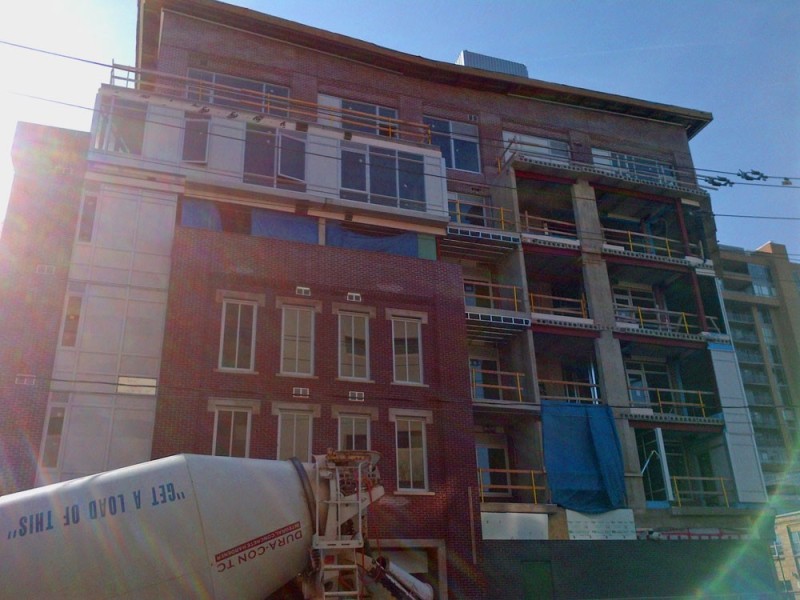
Welcome to the OMB, where everything’s made up and the rationale doesn’t matter
Throughout my undergrad degree in planning, I was taught to take pride in the Ontario Municipal Board (OMB). My professors lauded the virtues of this independent, arm’s-length body that rises above petty politics in the name of ‘good planning’. Supported by provincial legislation that gives it the power to overturn city council decisions, the OMB is a safety net for our profession’s integrity.
That’s the typical rose-coloured perception, anyway. Viewed in another light, OMB Chairs are quasi-judges with immense decision-making power, no accountability, and a modicum of transparency. Personally, I think the OMB demeans our democratically-elected municipal councils and encourages them to slough off tough decisions. More worryingly, it gives status-quo developers a way to dig in their heels against change.
Take, for example, the Region of Waterloo’s efforts to limit suburban sprawl. The Region’s new Official Plan directs future growth to already built-up areas, in line with Provincial policies that set targets for intensification by 2031. Only 85 hectares (210 acres) of farmland on the edge of town has been permitted for development expansion. The rest of the growth will have to come through intensification.

Some developers that had bought up land on the outskirts of the urban boundary don’t like this vision for more compact urban growth. So they took the Region to the OMB, arguing for an additional 1,053 hectares (2,602 acres) of developable land. And they won.
The OMB’s rulings on land use are final; they are the ultimate arbiters of what constitutes ‘good planning’ in Ontario. The only way to reverse an OMB decision is to appeal to the courts on narrow legal grounds. This is what the Region did. It is encouraging to see them stand their ground, and it is even more encouraging that the Province (which appoints OMB Chairs in the first place) is siding with the Region as the case goes to Divisional Court. I’m hopeful that this will be a pivotal moment for planning in Ontario, and that it will begin to expose the cracks in the OMB’s foundation.
Dissecting the OMB’s decision
So with a court challenge looming, I thought I’d do a little armchair analysis of my own. What does the OMB’s decision look like, and how does it justify the continued expansion of our urban areas into some of the country’s best farmland?
To be honest, I was taken aback by the utter lack of rigour in this decision, the full text of which you can read here: Case No. PL110080 [PDF]. The OMB Chair seems to have picked a few straw men rather than taking a comprehensive look at the implications of endless greenfield development.
We do not intend, in the course of these reasons, to address or detail each argument advanced and calculation made, but rather, refer to those matters (“Determining Factors”) which influenced our decision as to which land budget was most appropriate in this case. These Determining Factors are Aging in Place, Range and Mix of Housing, Land Inventory, Additional Apartment Units and Conflict with PPS.
— Para. 49
That’s a pretty short list of ‘Determining Factors’. What about the unsupportable cost of building and maintaining suburban infrastructure? What about the increased transportation options that compact cities provide? What about the importance of protecting our farmland for regional food security? These are all important factors not only in the Region’s new Official Plan, but also in the Province’s Growth Plan.
What irks me more than the OMB’s selective choice of ‘Determining Factors’ is that there is no rationale to explain why they were chosen in the first place! The decision seems to be stacked against the Region from the start.
If the OMB’s list of ‘Determining Factors’ befuddled me, I was stunned beyond belief to read that it considers the Province’s time-bound intensification targets to be mere guidelines. This has huge repercussions not just for the future of growth planning in Waterloo Region, but for any municipality that is trying to rein in sprawl.
The Region argues that, based on the language of s. 2.2.7.2 of the Growth Plan, the requisite density target must be achieved by the year 2031 and, as a result, the Landowners’ Land Budget is fatally flawed. We do not agree.
[...] The section clearly states that the density target “will be planned to be achieved” as opposed to “will be achieved”. Furthermore and perhaps more importantly, no date is specifically mentioned. The language used is simply not as demanding as what the Region suggests.
— Paras. 69 & 70
Why don’t we go through the Growth Plan and look at how often it reiterates the importance of a 2031 target.
In the Growth Plan’s introduction, section 1.1 starts off by explaining the Plan’s purpose:
“It is a framework for implementing the Government of Ontario's vision for building stronger, prosperous communities by better managing growth in this region to 2031.”
Section 1.4, bluntly titled How to Read this Plan, spells it out again:
“This Plan informs decision-making regarding growth management in the GGH. It contains a set of policies for managing growth and development to the year 2031. While certain policies have specific target dates, the goals and policies of this Plan are intended to be achieved within the life of this Plan.”
Section 2.2.1.1 gives the reader some forecasts to inform municipal decision-making. These forecasts stop at 2031:
“Population and employment forecasts contained in Schedule 3 for all upper- and single-tier municipalities will be used for planning and managing growth in the GGH.”
This brings us back to Section 2.2.7.2, which the OMB claims is free from the 2031 target that permeates the rest of the Growth Plan:
“The designated greenfield area of each upper- or single-tier municipality will be planned to achieve a minimum density target that is not less than 50 residents and jobs combined per hectare.”
Looking back to Section 1.4, How to Read this Plan, tells us that “the goals and policies of this Plan are intended to be achieved within the life of this Plan”. What is the lifetime of the Plan? Until 2031.
When you actually read the Growth Plan, it’s clear that a 2031 density target matters. Democratically-elected Provincial and Regional governments have put an immense amount of work into planning for compact, vibrant, sustainable communities, and we can’t get there without a real deadline to limit sprawl.
This OMB decision unravels the last 10 years of progress, and we simply can’t let that happen. To the Region of Waterloo and the Province of Ontario, I wish you all the best at Divisional Court.
Sam Nabi